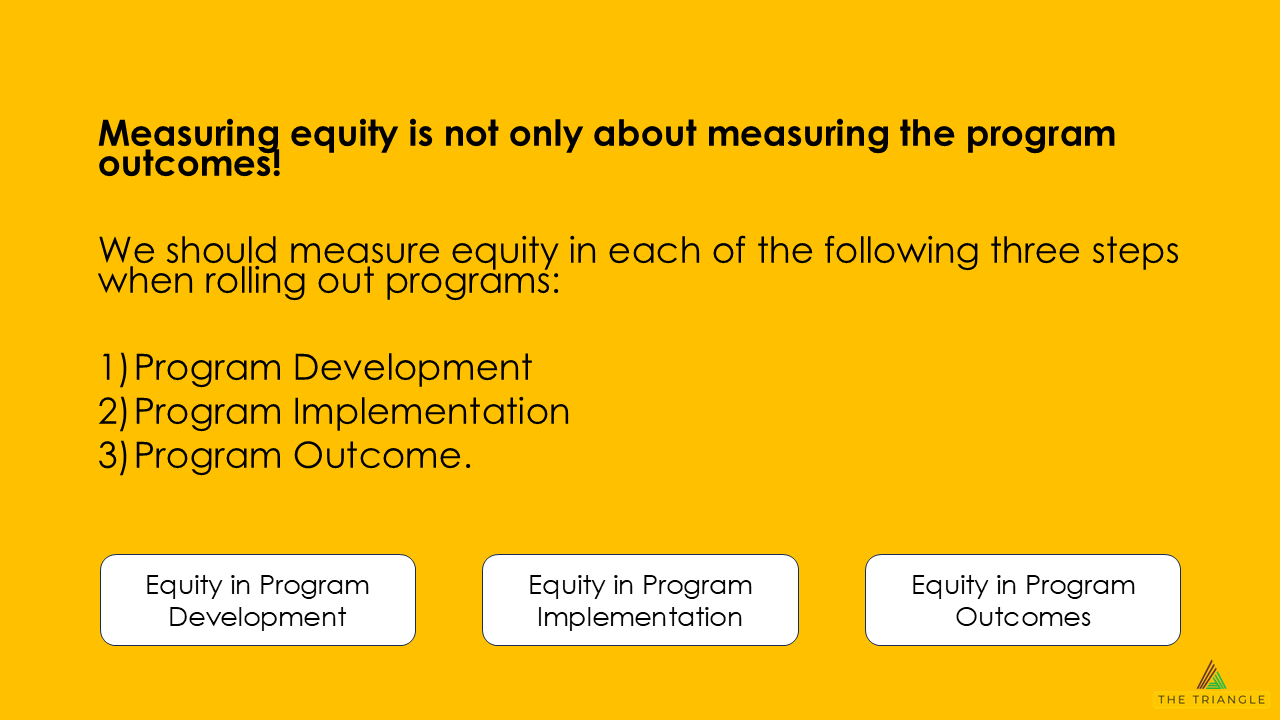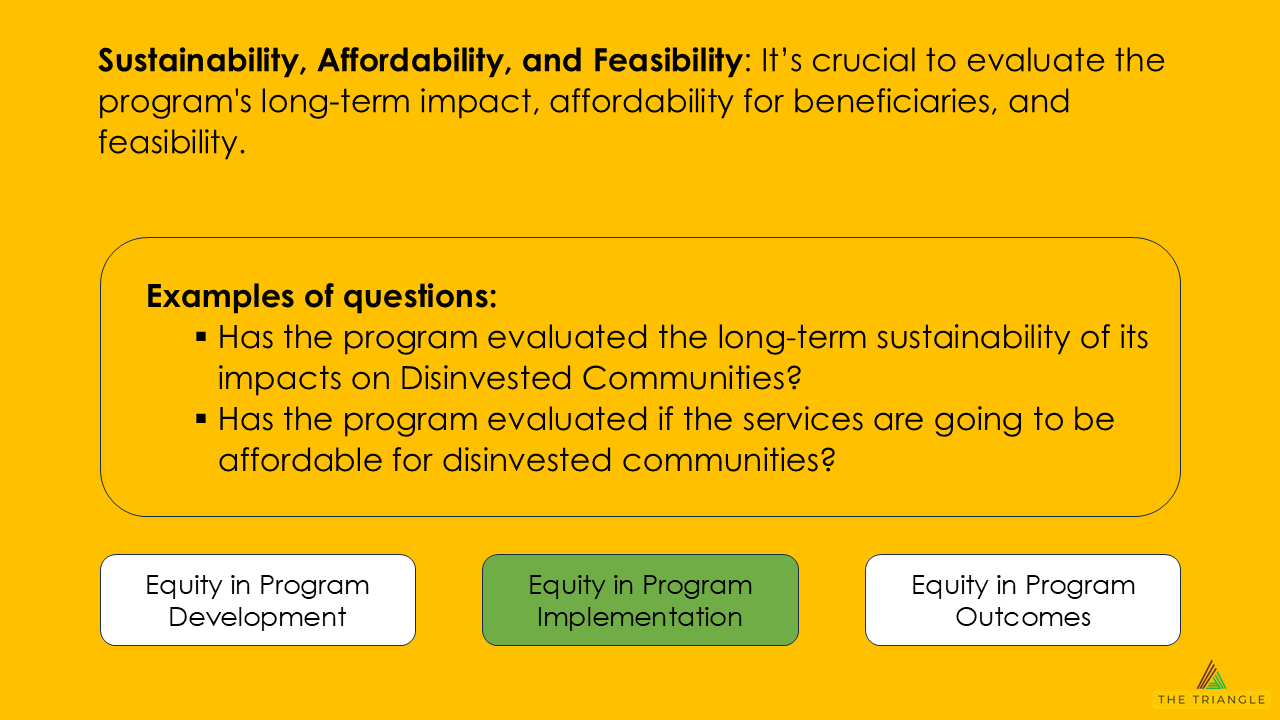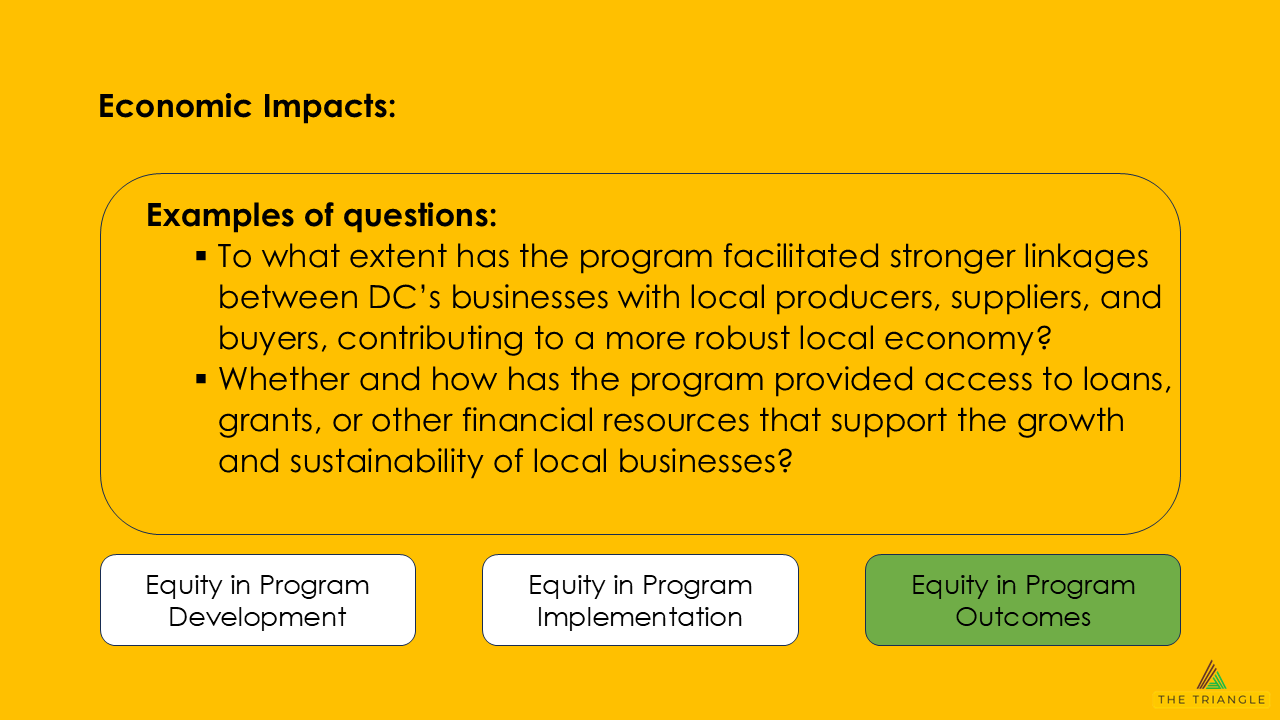How to incorporate equity as a key driver in program design and implementation
Summary:
This article offers a framework to effectively integrate equity as a key driver into program design and implementation. You’ll also learn about creating equity profiles and measuring equity.
Equity impacts everyone. Unequal resource distribution hurts communities and individuals, regardless of wealth. This article explains why equity should be a core driver in programs and how to integrate it effectively into design and implementation.
Key points include:
Equity affects everyone: It’s not just about compassion—creating a more equitable society benefits all.
Current challenges: Government agencies and CBOs often fail to scale or sustain equity-driven practices.
Framework for equity-driven programs:
Create a common language for equity: Who are the beneficiaries? What are the goals?
Identify disadvantaged communities: Use clear data and methods.
Develop equity profiles: Understand the historical context, community needs, and power dynamics.
Implement policies and practices: Focus on both operational and strategic factors to drive equity in design and execution.
Track progress and course correct: Use developmental evaluation to monitor programs and make adjustments along the way.
Equity: What’s in it for me?
Unequal distribution of resources affects all of us. Even if you live in a $10M home in San Francisco, you can still step outside and see someone suffering on the street. That impacts you—not just emotionally, but also in terms of how safe and comfortable you feel. You want to start your day in a clean, vibrant neighborhood, not surrounded by visible signs of misery.
If human compassion doesn’t drive us to care about equity, self-interest should. A happy, healthy community benefits everyone.
Equity: A (or, the) Key Driver for Programs, Projects, and Policies
Years ago, when I was working at a government agency, I suggested examining the equity impacts of a program focused on reducing greenhouse gas emissions. The response? Confusion, as if equity was unrelated to the project. Thankfully, things have evolved since then, with a growing focus on equity and environmental justice. But despite the increased attention to equity and justice, our policies still struggle to deliver real results.
Integrating Equity into Program Design and Implementation
Government agencies and community-based organizations (CBOs) have largely failed to incorporate equity into their practices. Even when they succeed, these efforts are often not scalable or sustainable in the long term.
Government agencies want to incorporate equity into their policies and programs but often struggle to do it effectively due to various things like lack of time, resources, experience, and intention.
Community-based organizations (CBOs) advocate for equity-driven policymaking, yet their suggestions barely show impacts since they are not align with how government operates. For example, a lot of these equity-driven ambitious ideas don’t consider that procurement takes one year in government, and hiring one staff can easily fail after 6 months of marathon interviews and recruitment. CBOs often push for empowerment, healing, and community involvement but without a clear roadmap for embedding these into bureaucratic processes.
As a result, government efforts fall short, and CBOs’ advocacy doesn’t lead to targeted and scalable change.
Think about implementing a new law or order. It typically takes a year for funds and staff to be in place after a law or executive order is passed. By then, the pressure from the legislature, public, vocal CBOs, to deliver results makes it hard to design thoughtful programs. Leaders and politicians must show results, and, they push staff to implement the program, because they are already “behind”! The outcome is often a rush job—programs that don’t fully address the goals they were meant to achieve.
This article offers a framework to effectively integrate equity into program design and implementation.
A Feasible Framework for Equity-Driven Programs
We need simple frameworks that work rather than advanced frameworks that create more confusion. Here, I provide a relatively simple one.
To incorporate equity, we must clarify the what, how, who, and when for both operational and non-operational (policy-related/ strategic) factors. Operational factors include things like procurement and staffing. Strategic and policy factors focus on defining equity, engaging the community, and deciding about resource allocation.
Here are 5 key steps for embedding equity into programs or using equity as THE driver. Depending on your context, some steps may be more relevant than others.
1. Create a Common Language for Equity
Clarify who (or what) the program going to serve. Who (or what) will be the main beneficiaries?
What will be the ROI (Return On Investment) if you focus on this population or a particular beneficiary? Who is going to get upset?
Often programs or projects struggle at this first steps.
In one project I worked on a few years ago, it was so much for our team to respond this question that we shifted the definition of equity mid-way. Initially, we aimed to serve disadvantaged communities. A year later, we decided to focus on disadvantaged regions instead. The result? This led to confusion, mistrust, and inefficiency.
2. Identify Disadvantaged Communities
Clarify how you are going to identify disadvantaged communities. What data, tools, and methods your you need to use? What are the pros and cons of all these methods and data systems.
I am developing a data toolkit just to do that. You’ll get notified when that’s ready!
3. Create Equity Profiles
Conduct a landscape analysis to understand the historical context, current dynamics, and the strengths and weaknesses of disadvantaged communities, as well as the organizations and support systems involved.
Creating equity profiles helps frame the current challenges and opportunities. This process allows everyone involved, including beneficiaries, to develop a shared understanding of why things are the way they are, what the key opportunities and weaknesses are, and how to move forward.
For disadvantaged communities, clarify things like:
What groups are considered underserved?
What are their needs, goals, and challenges?
What communication channels do they use?
What are the power dynamics at play?
For decision-makers and service providers, clarify things like:
How can government energize support systems for frontline communities?
What harmful practices need to change?
How can funding be made more accessible?
For support systems, clarify things like::
What networks, legal systems, and non-traditional funding sources can support frontline communities?
What communication methods are effective?
4. Implement Policies and Practices
With equity profiles in hand, implement policies and practices that address both operational and strategic/ policy factors.
See the following slides!


























In summary, you should clarify the following:
Equity in program development:
Methods for selecting disadvantaged communities
Understanding historical and current events
Engaging stakeholders and addressing power dynamics
Equity in program implementation:
Accessibility and cultural sensitivity
Removing barriers to participation
Quality, timeliness, and sustainability
Equity in program outcomes:
Empowerment and disparity reduction
Long-term sustainability
Social, economic, and health impacts
5. Track Progress and Course Correct
There are many ways to monitor programs, but I recommend using developmental evaluation methods that allow for flexible tracking and course corrections along the way.
Here are five key considerations:
Develop a simple plan for continuous learning and adjustment.
Prioritize what you should really track—trying to measure everything will overwhelm you.
Use both qualitative and quantitative data and metrics. Qualitative data lacks a lot of details. You need both quantitative and qualitative data and metrics.
Be honest about what you can and can’t measure.
Create safe spaces for feedback from stakeholders to help refine and improve the program.
In future articles, I’ll dive deeper into these steps and offer practical how-tos for implementing equity in your work.





